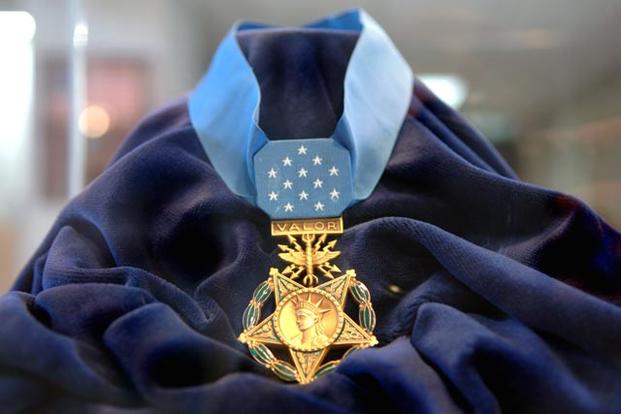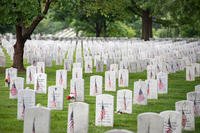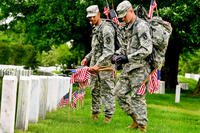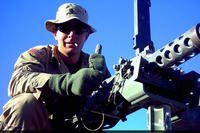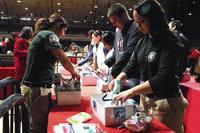The highest form of recognition service members can receive for their actions against an enemy force, the Medal of Honor serves as a sign of distinguished valor. Originally designed to motivate Sailors to act gallantly and embody seamanlike qualities, the Medal of Honor became a Congressional award when President Abraham Lincoln signed S.J.R. No. 82 in 1862.
While many recipients receive the Medal of Honor from the President of the United States during a ceremony, many receive it posthumously, never having the chance to know how their actions were recognized.
Here are only a few stories of service members who died before the Medal of Honor was awarded to them.
Freddie Stowers – World War I
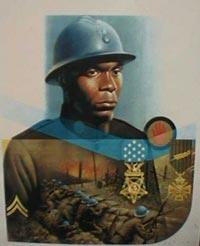
In 1990, at the instigation of Congress, the Department of the Army performed a review to learn if there were any deceased service members who deserved the Medal of Honor but never received one, posthumously or otherwise. Freddie Stowers' recommendation was uncovered soon after, and a team travelled to France and verified the details of the recommendation.
On September 28, 1918, Stower's company was ordered to assault Côte 188 in the Ardennes region of France. Although American forces steady advanced on the hill, the Germans faked surrender and eliminated half of the company in one barrage of gunfire. A lieutenant and several NCOs were killed, leaving Stowers in charge of his platoon.
Stowers encouraged the platoon to continue the advance, and they successfully dispatched a German trench line. He then consolidated the platoon and led them to advance on another German trench line. During the second advance, Stowers was shot twice and collapsed from blood loss. He encouraged his men to keep going, and died. The platoon successfully drove out the second trench line and took the hill.
Ben L. Salomon – World War II
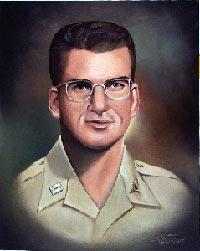
Ben L. Salomon served as a dentist during World War II, but he came to replace the field surgeon of the 2nd Battalion of the 105th Infantry. He served in this capacity in Saipan from June until July 7th, 1944. On that fateful day, Salomon worked in an aid station tent 50 yards from the forward foxhole line. The Japanese eventually overran the forward line and encroached on the tent. Salomon ordered the tent to be evacuated while he covered everyone.
Salomon's fate wasn't clear until an Army unit returned to the scene of the battle days later. The Army dentist's body was slumped over a machine gun and 98 deceased Japanese troops lay in front of him. He had received 76 bullet wounds and just as many bayonet wounds. It was determined that he had sustained up to 24 wounds while he was still alive.
The Medal of Honor wasn't awarded to Salomon for 59 years. Although he was frequently recommended for the Medal of Honor there were a number of factors working against him. First, the Geneva Conventions clearly state that anyone wearing the Red Cross armband cannot bear arms against the enemy. Medal of Honor guidelines also state that medical non-combatants may not receive the medal for offensive actions, and Salomon acted in defense. However, the issue was further complicated by the fact that only small, personal arms such as pistols and rifles can be considered self-defensive, but Salomon used a machine gun, which is typically a crew-served weapon.
Requests for Salomon throughout the years were repeatedly denied, and at one point the request was denied due to the time limit for receiving Medals of Honor for World War II having passed. But, in 2002 a USC Dental School doctor resubmitted a request through Congressman Brad Sherman, and it was accepted.
William H. Pitsenbarger – Vietnam
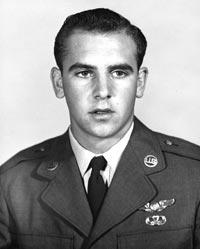
William H. Pitsenbarger wouldn't receive the Medal of Honor until 2000, about 34 years after his death. Pitsenbarger joined the Air Force in 1962 and qualified for Pararescue. Eventually flying over 300 rescue missions in Vietnam, Pitsenbarger risked his life almost every day to save fellow service members.
On April 11, 1966, Pitsenbarger was part of an operation involving two Huskies to rescue roughly half a dozen soldiers near Cam My. Pitsenbarger was lowered onto the ground and secured the wounded. Six soldiers were loaded and flown to an aid station, and the crews returned to evacuate the rest of the men. Pitsenbarger had remained with 20 who were left over, and when the returning helicopters took damage under small arms fire, Pitsenbarger waived them off.
For about 90 minutes, Pitsenbarger tended to the wounded with splints made out of vines and stretchers made out of saplings. He policed ammunition and dispersed it to the active survivors, then joined them with a rifle to fend off Viet Cong.
Later that night, Pitsenbarger was taken out by an enemy sniper. His body was found with a rifle and medkit still clutched in hands. Nine more soldiers made it back to safety that day.
Paul R. Smith – Iraq War
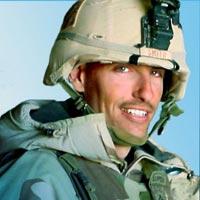
At the time of the 2003 invasion of Iraq, Paul R. Smith served as a Sergeant First Class in B Company, 11th Engineer Battalion of the 3rd Infantry Division. On April of that year, Smith was part of a force that was ordered to block the highway between Baghdad and Saddam International Airport. During the operation, Smith took part in a short battle that led to multiple Iraqi combatants being captured.
Smith utilized a nearby walled enclosure with a tower to hold the captured Iraqis, but soon discovered that between 50 and 100 combatants were taking position to attack the enclosure from a trench line nearby. A Bradley fighting vehicle and three M113 APCs were called to assault the trench, but the Bradley left early to reload its depleted ammunition and one of the M113s was struck by a mortar, leaving its crew injured.
Making the situation even more dire, a U.S. aid station was located near the enclosure and housed roughly 100 combat casualties. Smith boarded one of the M113s and ordered the driver to position him so that he could fire on the trench and at the enclosure's tower where Iraqis were taking cover. While using up three boxes of ammunition on the M113s machine gun, a team of soldiers took the enclosure's tower and ousted the Iraqi's. Smith had died during the battle,having been shot 13 times.
Smith was posthumously given the Medal of Honor on April 4, 2005.
